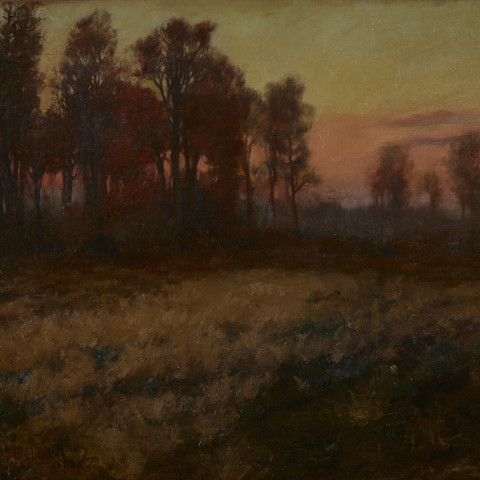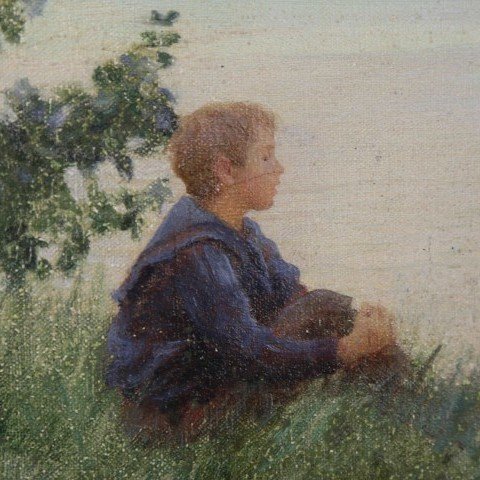Charles Courtney Curran was born in Hartford, Kentucky on February 13, 1861, the son of Ulysses Thompson Curran and his wife Elizabeth Thompson. He spent his childhood in Sandusky, Ohio. He studied briefly at the Cincinnati Academy of Design, and moved to New York City in 1881.
There he studied at the National Academy of Design, under Walter Satterlee, and the Art Students League. At age 23, he had his first public exhibition at the Academy. He was elected an Associate of the Academy in 1886 and a full Academician in 1888. He received the Academy's Third Hallgarten Prize in 1889.
From 1889 to 1891, Curran studied at the Académie Julian in Paris, where he studied with Benjamin Constant and Jules Joseph Lefebvre. He won an award at the Paris Salon of 1890. He also won prizes at the Columbian Exposition of 1893 in Chicago, the Paris Exposition of 1900, and the 1901 Pan-American Exposition in Buffalo, New York, of which he was the Assistant Director.
In 1903, Curran was invited by artist Frederick Dellenbaugh to come to Cragsmoor, New York, an art center in the Hudson River Valley. Seven years later, Curran established a studio there. He would spend the next thirty years dividing his time between Cragsmoor and New York City. During this time, he taught at the Pratt Institute, the Cooper Union and the National Academy.
Curran is best known for his paintings of female figures posed within picturesque vistas of the Cragsmoor area, and usually rendered in an impressionist style. The "new" women of these paintings embodied health and vigor. He also painted genre scenes, portraits and landscapes, as well as a series of views of the Imperial Temples of Peking.
Curran died in New York City on November 9, 1942.


